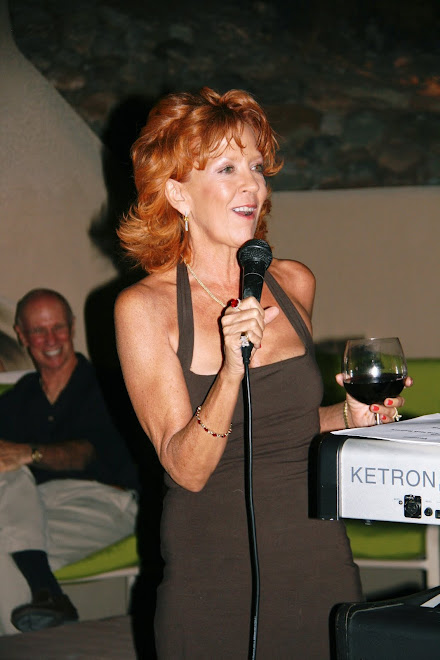For anyone considering becoming a film producer for your own trailer, this information may shed some light to your cameras and action!
My thanks to Rasana for inviting me to chat with you today about my experience in producing my first video book trailer for my new release, Widow’s Row.
That should act as your first caveat. My experience is limited to one production. But I had a good team of advisors. Brandon Croy is a professional filmmaker in Denver, Colorado and Cameron Bruns is Vice President of an international marketing company. Like I said, I kept good company.
Let’s face it. Even with a big publishing house behind you, today’s authors are carrying the burden of their own promotion. The video book trailer has become an explosive tool in marketing books.
There is a maze of tutorials on the Web specific to Windows Movie Maker and this little guest blog is in no way an attempt at trying to replace their technical instructions. Most of these tips you read here should transcend well to any other movie-making program you use. These tips should make your experience with movie making grow ripe without aggravation.
Through my trial and error, here’s what you can learn from my mistakes:
Do invest the time to look at the tutorials. You’ll quickly learn how to incorporate the elements that will turn your book trailer into a professional piece of film, such as transitions and special effects.
Do make a study of the scores of book trailers already out there. Watch the ‘homemade’ trailers as well as those with big blockbuster budgets, including any new Big Screen teasers. Just as in the book business, trailers are subjective. Tune into your genre and your own voice and make your work a reflection of both. Evaluate your feedback, but tune out the naysayers!
I didn’t lay down my soundtrack first and this was a huge mistake. I wanted the images to be in sync with the varying beats of the music. Boom. Boom. Boom. Image. Image. Image. You get the idea. It’s far easier to lay down the audio and then drag the images into your storyboard and timeline once you have the soundtrack in place.
Music clips are available through various sites. Search under Royalty Free Music, but remember it probably isn’t going to be exactly free. There are usually membership fees involved, and maybe even small stipends per track. There are also plenty of talented musicians out there that would love to help you with your own recordings. Buddy up with your local bands.
Most of these sources for short sound clips are designed so that you can make your video exactly the length you want, but just like the commercials that grab your attention on TV, remember less is best. You can choose from several coordinated timed segments. Some will be 60 seconds, 30 seconds, and even less than ten seconds. Rhythm. Pacing. All key elements to your ‘commercial’.
Do get permissions for everything you use! There are sources for images on the web that are royalty free. Many of the photographers will request credit for use of their images. Double check. When seeking permissions I recommend doing it via email so that you have a permanent record of correspondence.
If you’re currently writing a manuscript, always wear your producer’s hat. What scenes are you developing that lend themselves to an image? Is it the rolling hills of Ireland? A chase scene? Fava beans and a nice glass of Chianti? Keep a journal of anything that might make for a good still or short video. It’s no time to place yourself in the critic’s corner. Jot down every possibility. I like a good mix of the mundane and the ordinary, paired with the outrageous and unexpected, but I write suspense. I want my final film product to be arcane in nature. If you write in other genres such as historical, literary, or romance, I would still suggest the idea of blending the familiar with the not so familiar. Keep your viewers engaged and guessing.
If you plan to use speaking actors or a voice-over narrator, the Window’s Movie Maker is designed to allow you to lay that audio directly over your music.
If you are the photographer, make sure your camera is set with the date stamp turned off. Sighing, here.
Now this part is no secret. You will read it elsewhere on the web. Unfortunately some of us have to learn the hard way. Save everything. Save every still and every video and every audio, separately. And while engaged with your program open, save your work and save it often.
So, friends, here’s my first video trailer, Widow’s Row.
What did you see? I’m a perfectionist and I’m crazy mad about my boo-boos. The most obvious is the red lettering in the church video clip. Having a little trouble reading it? That’s because I manipulated the video after inserting it and deleted the original file. Because I was stuck without the original, I was able to use the program to warp the imagery. Something to distract from the words you can’t read. Between you and me, I handle my film critics by claiming there is subliminal messaging in those words. LOL.
Did you notice the date stamp on the church still? Oops. And again, because I’d deleted the original and turned my movie into one single file, I was unable to remove the nasty yellow date stamp.
Give yourself time. And plenty of forgiveness. Remember this tool is a reflection of your book. Your name is on it. You’ve written and rewritten your book until it’s perfect. If you aren’t satisfied with your trailer, help is all around you.
And I leave you with my favorite tip of all. Have fun! Make mistakes. Start over. Start with a family movie or vacation memories.
Lala Corriere








